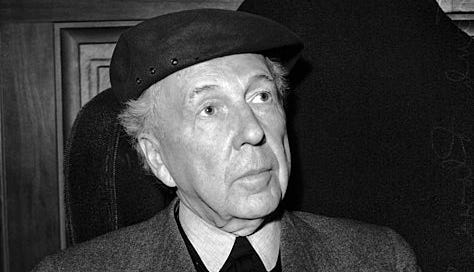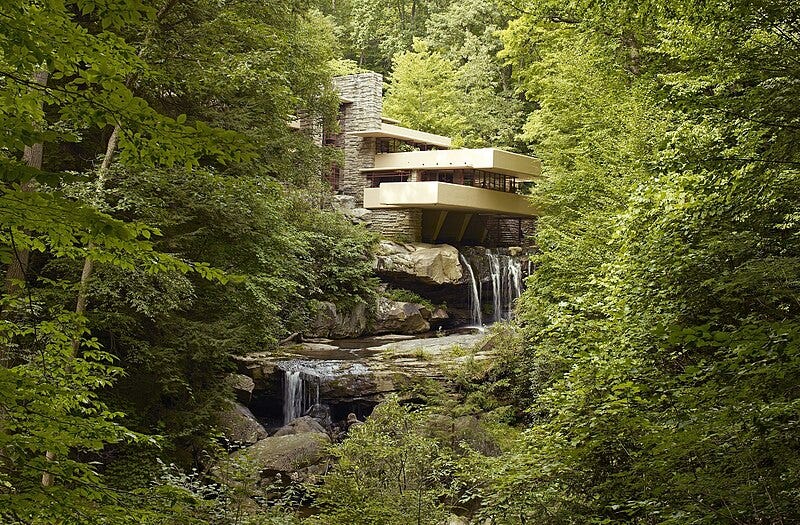Working with creative individuals can be annoying. We don’t like to follow rules and procedures. We get defensive about the tiniest of details. And we tend to dilly dally and procrastinate before starting tasks.
In general, truly creative individuals (i.e. artists, i.e. adventurers, i.e. innovators) tend to slow things down. This is appreciated in regular human life—it helps us enjoy and stay in the moment more—but for a corporation or start up, slowing down is an act of treason. Speed and efficiency are considered today’s primary weapons of war in that battlefield known as the “free market.” The most surefire strategy to victory, we’re told, is to get more shit done and get it done faster than anyone else.
Outwork, not outwit or outplay, the competition.
And while, yes, Pablo Picasso reminds us that “Action is the foundational key to all success,” we also have to remember that great maxim from Hemingway to “never confuse movement with action.”
For his book on Creativity, John Cleese, the legendary comedian of Monty Python fame, ran an experiment about creativity in architects. What they found was the most uncreative architects were the ones who, after receiving an assignment, got to work straight away. The creative ones instead tended to goof off and doodle on the page. Cleese writes:
“the creative architects knew how to play. They could get immersed in a problem. It was almost childlike, like when a child gets utterly absorbed in a problem. The second thing was that they deferred making decisions as long as they could. This is surprising.
If you have a decision to make, what is the single most important question to ask yourself? I believe it’s ‘when does this decision have to be made’? When most of us have a problem that’s a little bit unresolved, we’re a little bit uncomfortable. We want to resolve it. The creative architects had this tolerance for this discomfort we all feel when we leave things unresolved.”
For example, in the early 1930s Frank Lloyd Wright was commissioned to design a new home for Pittsburgh department magnate Edgar Kaufman after the family’s cabin in southwestern Pennsylvania had fallen into disrepair. Kaufman requested the new home be built, like the old one, below the waterfalls of the Bear Run tributary. That way the family could be closer to those rich beauties of nature, and admire them from the porch with a morning coffee or evening cocktail.
Wright agreed to the terms. I mean, with the money Kaufman was giving him, why wouldn’t he? But after visiting the site and ordering a topographical survey, he pretty much ignored the project. In fact, he did no work on it for nine months while telling Kaufman everything was going according to plan.
See, Wright’s big revolutionary idea as an artist was this notion of “organic architecture”—basically, that architecture should live in harmony with its surrounding nature. Wright’s mentor had been Louis Sullivan, “the father of skyscrapers,” who believed “the pervading law of all things organic and inorganic, of all things physical and metaphysical, of all things human, and all things super-human … form ever follows function. This is the law.”
Wright took things one step further. He believed “form and function are one,” as it is in nature. You sense this when viewing Wright’s buildings, which never stick out or announce themselves in that obtrusive manner modern architecture does. And that was the problem with Kaufman’s request—building a cabin beside the river did stick out. It was apart from its surrounding nature rather than of a part. Like all creative types, Wright didn’t want to whore himself and do work beneath his ideals … but he also wanted the money.
Eventually Kaufman grew irate and impatient from all the radio silence. One day, he called Wright’s offices and announced he’d be there in two hours. Upon arrival, he expected to finally see the blueprints for his new home.
Instantly, Wright dropped everything and got to work. It was then, of course, that divine inspiration struck. Instead of building the home below the waterfalls, Wright thought, he would build the home over the waterfalls. A whirlwind of creativity followed and he solved a problem that had stumped him for nine months in those two hours. Just as Kaufman entered the building, Wright was putting the finishing touches on his masterpiece, which he later called “Fallingwater” and is considered one of the most iconic works in all of American architecture.
Its beauty is simply undeniable.
This story teaches a couple lessons on creativity and working with creative people. One, as the advertising and brand strategy expert Rory Sutherland has said, “Creative people know that something that is emotionally potent can come from a rather trivial behavior, gesture, or changing of wording.”
Again, build the home over the waterfalls, instead of below them. Changing one word changed the history of American architecture. This kind of thinking applies to our daily interactions with others as well. Consider how differently you would respond if someone told you, “Can you close the door?” vs. “Close the door, please.” vs. “There’s a draft.”
“We respond to those same sentences, although they are attempting the same end, in completely different ways,” Sutherland says. “And therefore creative people are right, in many cases, although not all, to get anally retentive about, what seems to be, especially to the people commissioning them, relatively small details.”
The second goes back to Cleese and the creative architects who made sure to delay decisions as long as possible and instill a sense of play in their work. “Why would those two things be of importance?” Cleese writes. “The playfulness is because in that moment of childlike play, you’re much more in touch with your unconscious. The second is that when you defer decisions as long as possible, it’s giving your unconscious the maximum amount of time to come up with something.”
One last note here. I want you to know that I conceived of this essay after my wife told me I dilly dally too much between tasks. And I want you to know this is my way of saying, babe, chill, I’m not wasting time, I’m being creative.





Interesting piece!